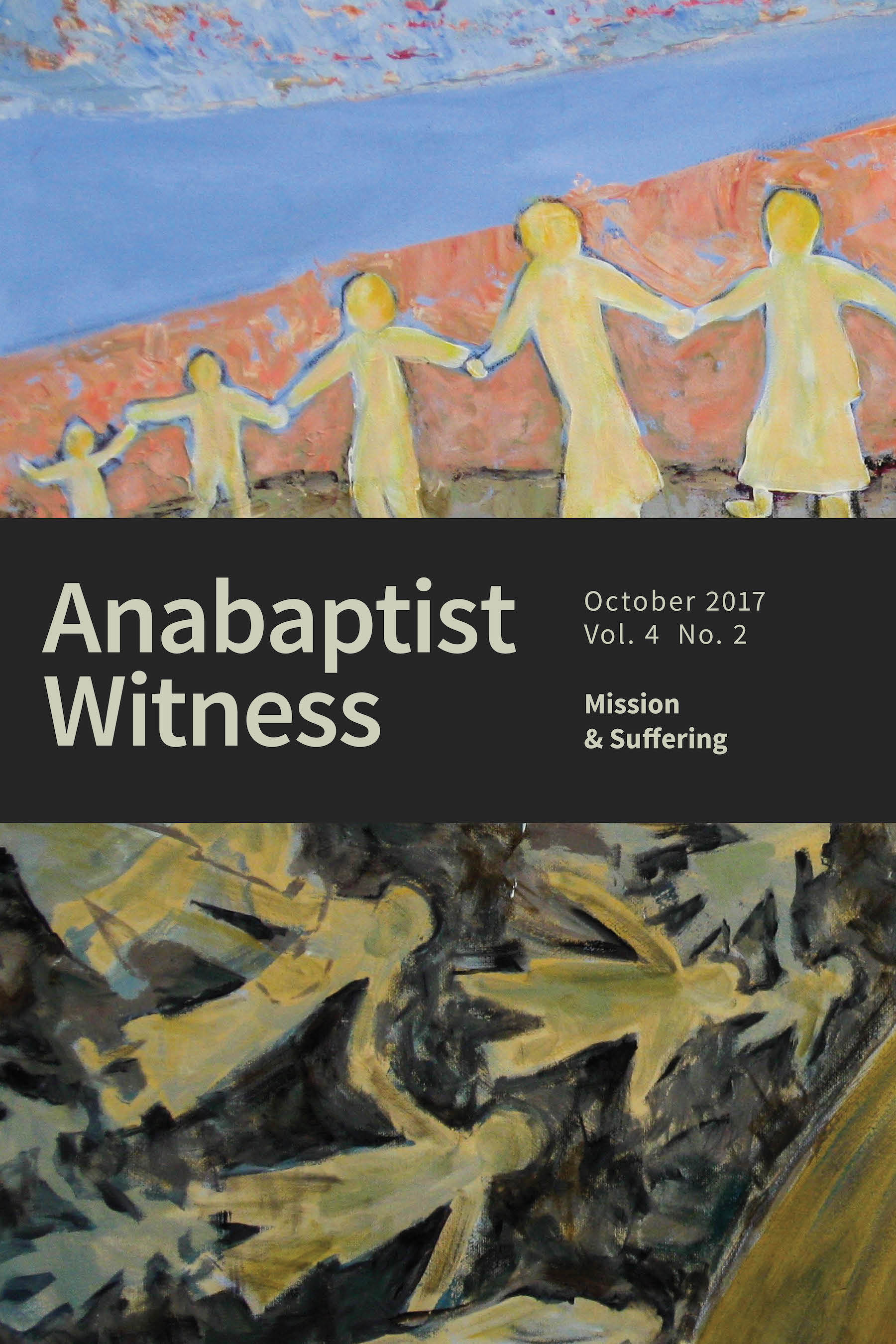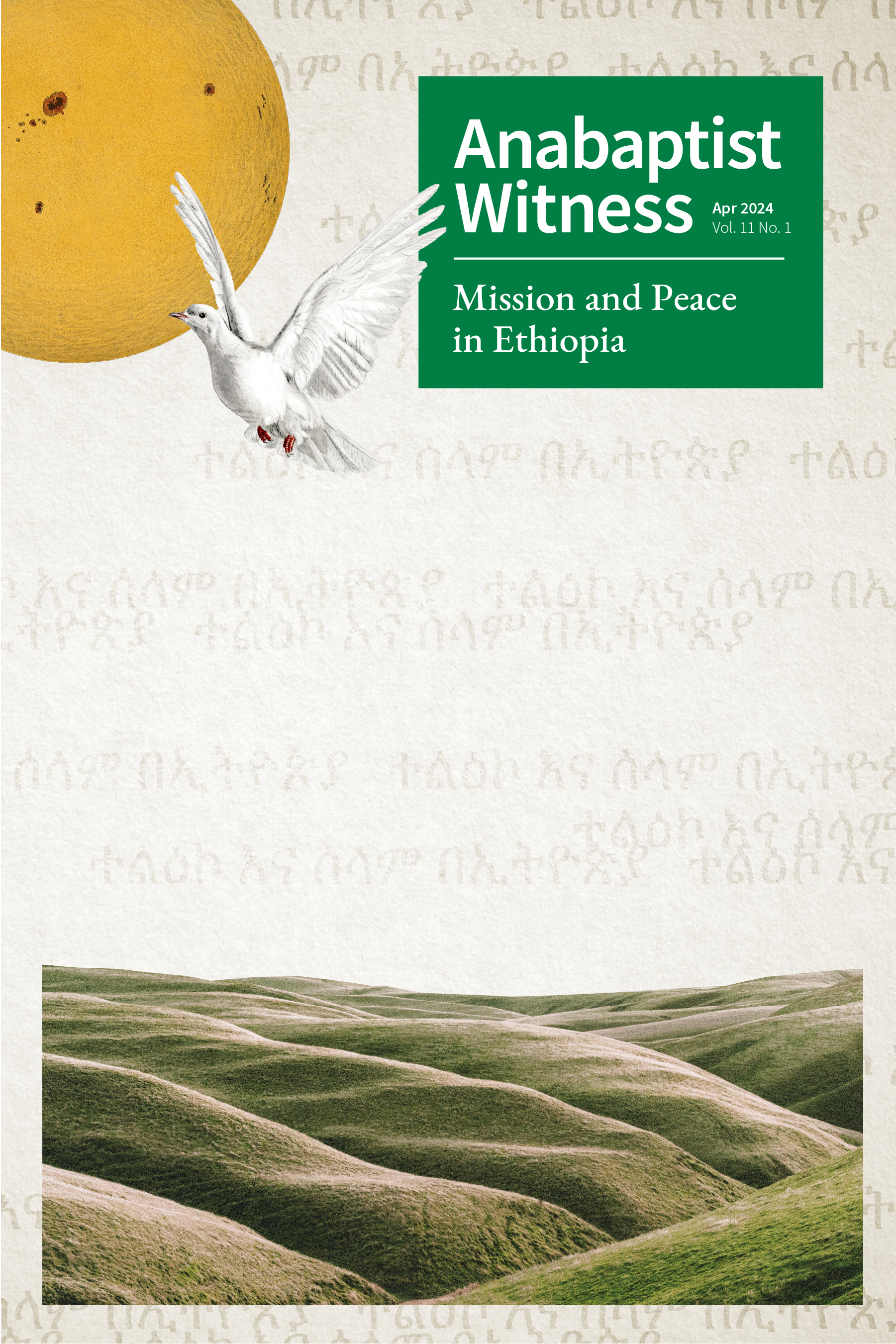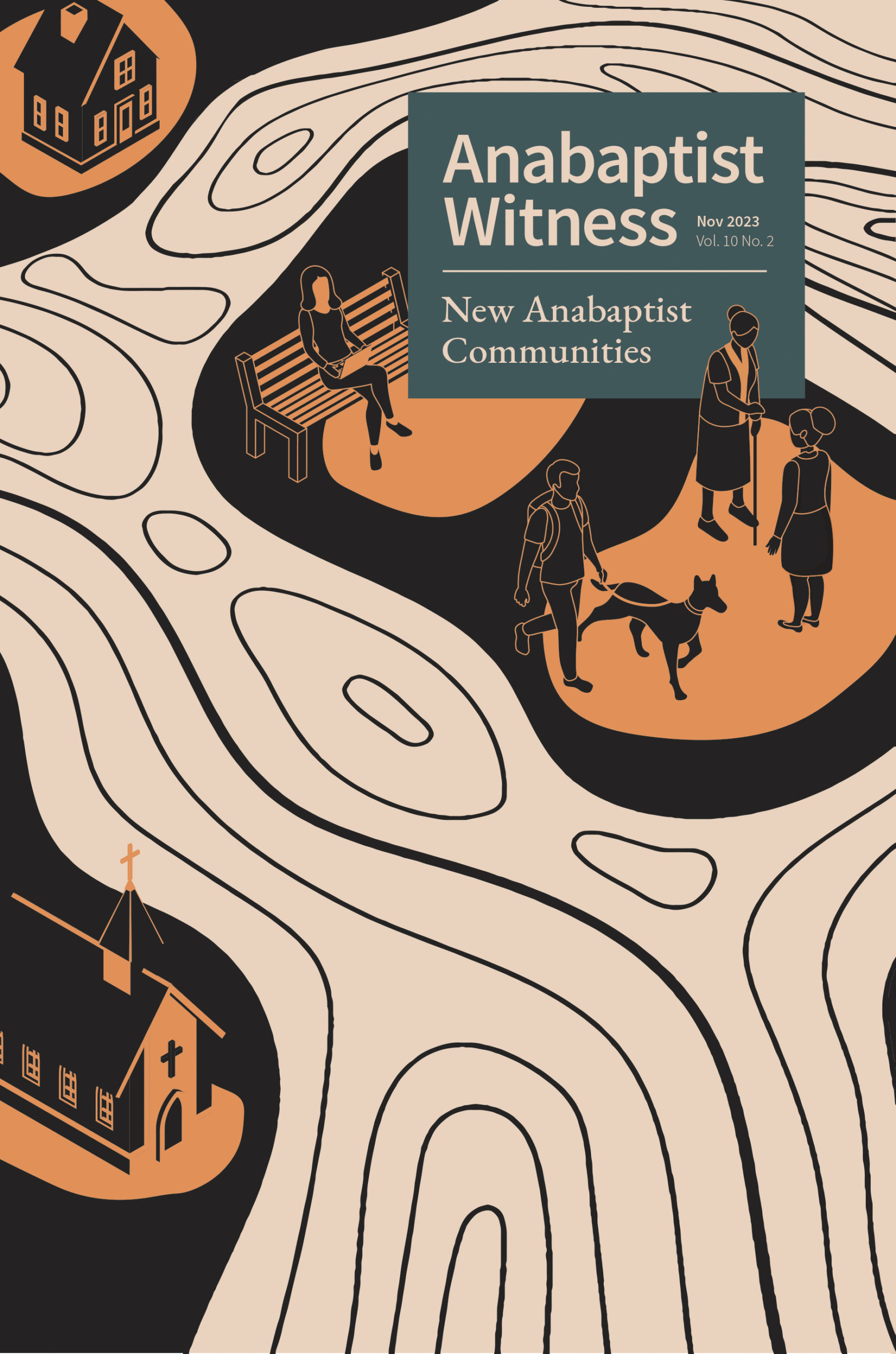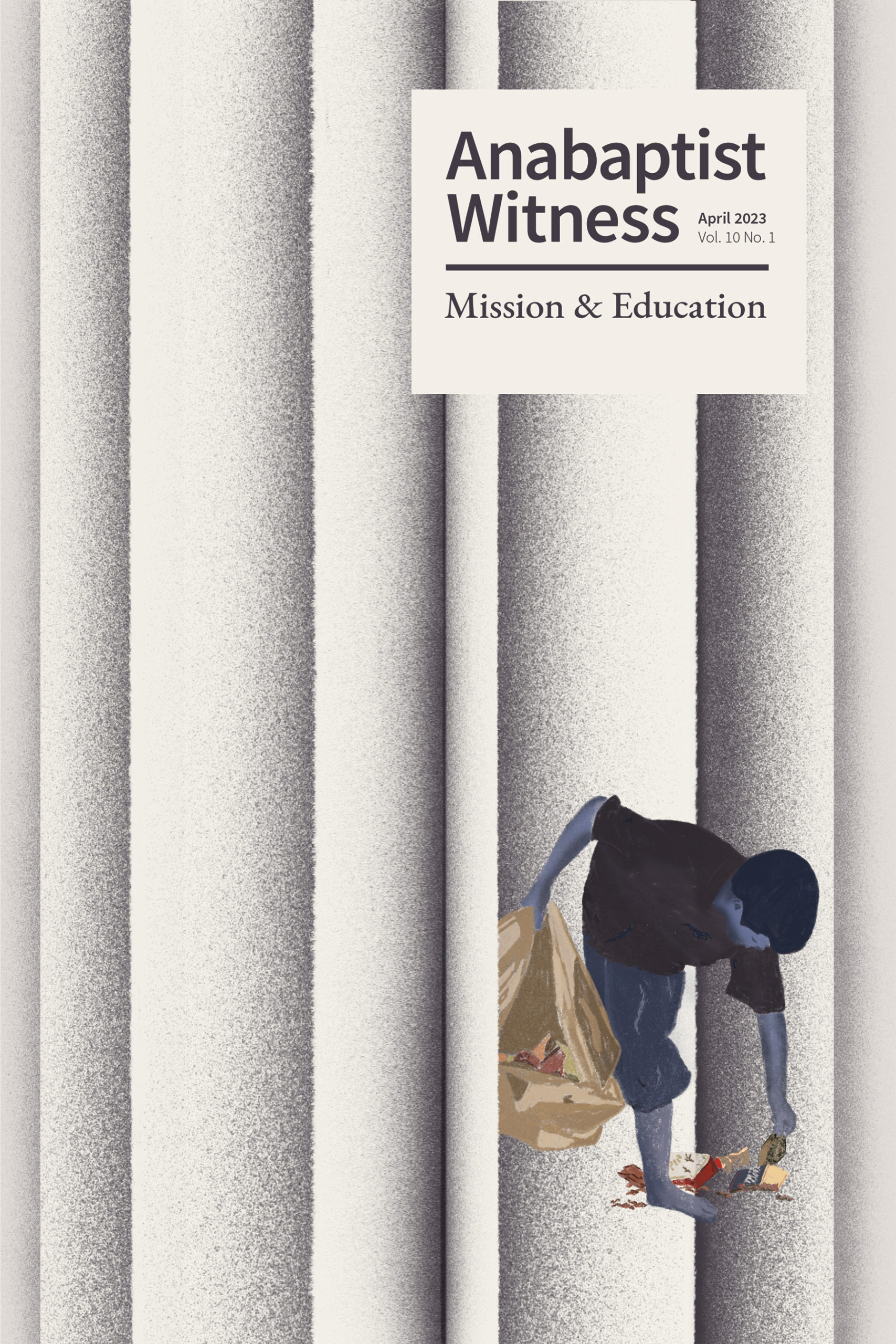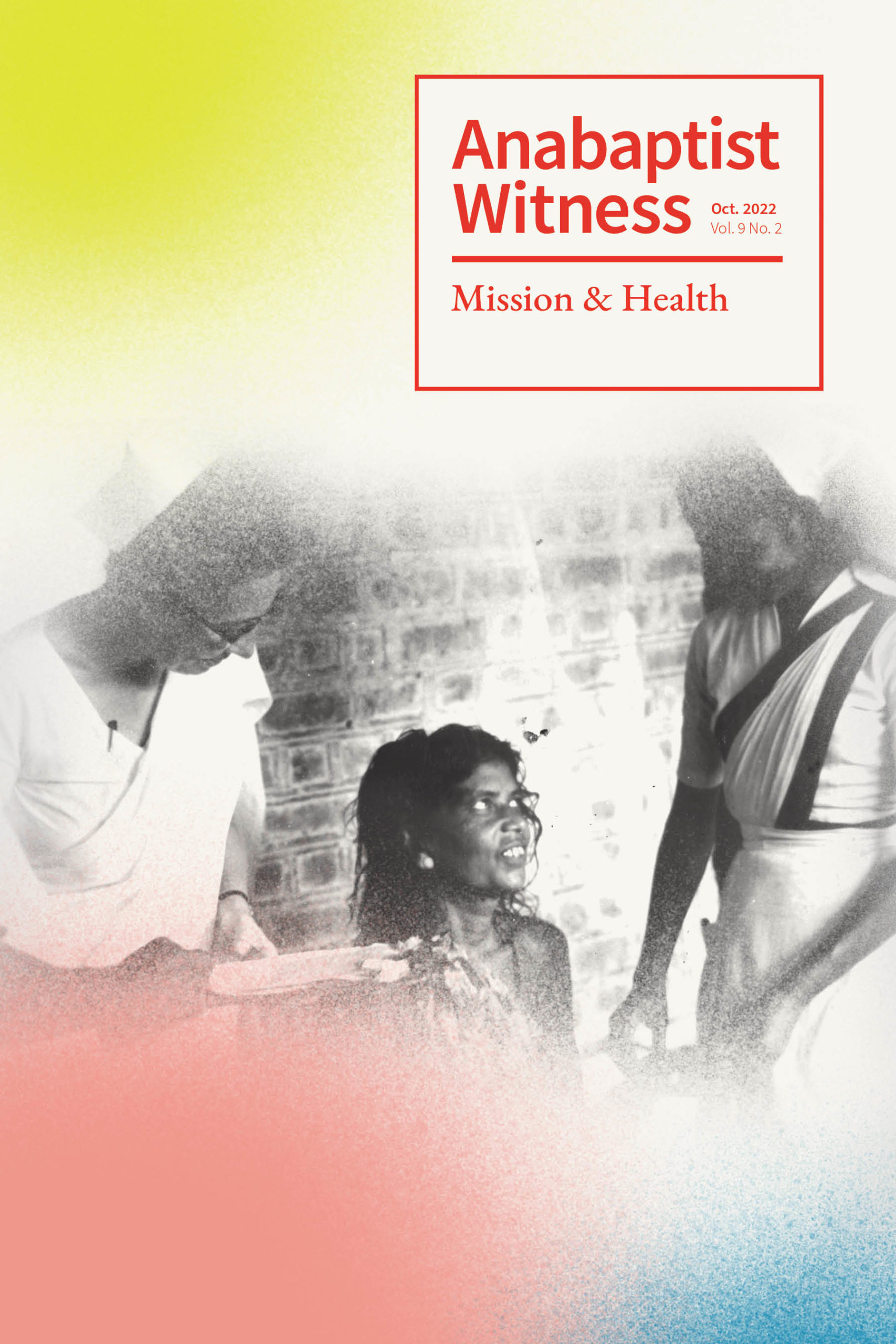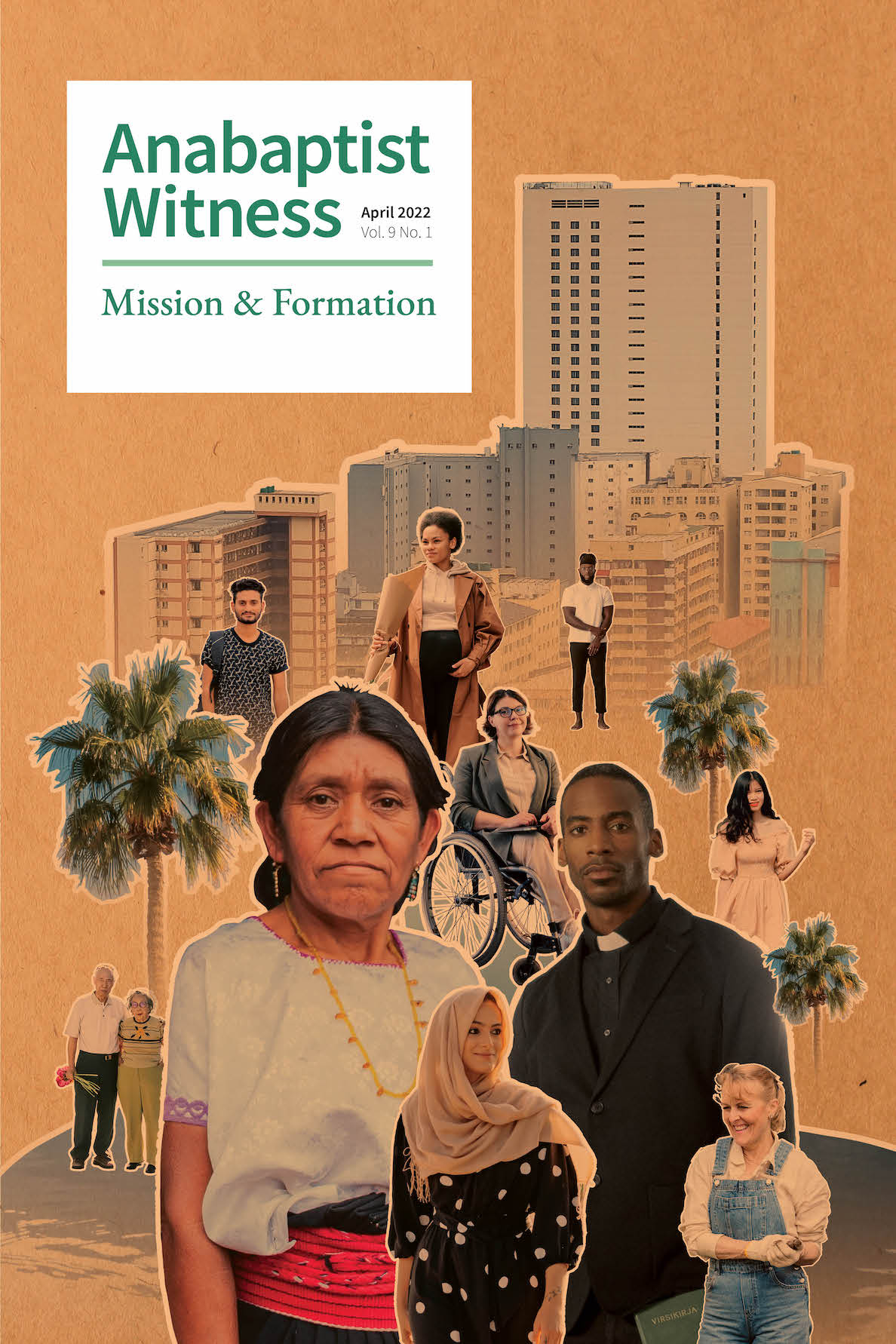Misson and Suffering
About This Issue Download this issue
Misson and Suffering
In mid-September, Goshen (IN) College hosted the 18th Believers’ Church Conference, “Word, Spirit, and the Renewal of the Church.” After a series of stimulating plenary speakers and paper presentations, Frank Thomas, a homiletics professor at Christian Theological Seminary (Indianapolis, IN), closed the conference with a powerful sermon on Luke 9:57–62. Thomas admitted that he wished things could be easy for followers of Jesus, but insisted on the relevance of Jesus’s hard sayings: “The Son of Man has nowhere to lay his head”; “Let the dead bury their own dead”; “No one who puts a hand to the plough and turns back is fit for the kingdom of God” (NRSV). If only we disciples were guaranteed comfortable families, jobs, and churches, Thomas said, but in fact “we never know when God will ask more of us, we never know what will be required of us.” Discipleship is a hard and costly road, and it involves a “narrow gate,” as theology professor Nancy Bedford of Garrett-Evangelical Theological Seminary (Chicago, IL) had emphasized earlier at the conference.
Thomas spoke of his African American community’s sense of being under siege by increasingly vocal white supremacist movements in the United States and police officers who gun down unarmed Black people with impunity. He urged followers of Jesus today to hear and respond to what God is asking of them in the face of this and similar situations. Bedford named the false, American “White Jesus,” contrasting it with the brown, Palestinian Jew Jesus of Nazareth who lived in solidarity with the vulnerable of his society. Bedford shared of the temptations offered to those who would worship the White Jesus, and counseled resistance. Resistance, solidarity with the vulnerable, responding to God no matter what—none of this promises immediate rewards or worldly success.
Missionaries are perhaps more aware than others that suffering is a possibility for disciples of Jesus.1 Popular histories of modern mission movements often highlight martyrs such as Ramon Llull, Jim Elliot, Óscar Romero, Tom Fox, or Mariam Vattalil. Martyr stories, of course, are common throughout the church: Roman Catholic, Eastern Orthodox, Coptic, and other ancient Christian bodies; Lutheran, Reformed, Anglican, and “Radical” Protestants; Evangelical and Pentecostal and independent Christian churches around the world—all have their martyr saints, many of whose stories have been collected into popular books.2 Missionaries also often tell of hunger, thirst, imprisonment, beatings, and other non-lethal challenges faced in their work. All of these stories share the sense that while suffering is not desirable, it is likely to be encountered by those devoted to God’s mission.
Anabaptists and Mennonites have long testified that witness to Jesus incurs violent opposition. The Martyrs Mirror has been foundational for Mennonites throughout the centuries, and more recent collections lift up suffering and persecuted Anabaptists and Mennonites in Russia, Colombia, Vietnam, the Congo, and elsewhere around the world.3 Contributors to the 1984 volume, Anabaptism and Mission, portray suffering as intrinsic to early Anabaptist mission theology and practice,4 and the great Mennonite missionary-theologian John Driver writes of “cruciform mission”—mission in the way of the cross—as one of the key images of genuine Christian mission.5
Gerald Mast illuminates our understanding of the place of suffering in early Anabaptist mission with his article in this issue of Anabaptist Witness. Writing about Ausbund hymns penned by imprisoned Anabaptists in Passau, Mast contends that “mission as displayed by the Passau singers and songwriters assumes conflict and suffering to be intrinsic to the life-giving mission of the church,” though he avoids making suffering compulsory; it is to be “freely chosen and joyfully shared.” Jonathan Bornman develops a similar perspective on the “reconciling role of suffering” in Anabaptist theology through a critical comparison with Senegalese Sufis’ own conception of nonviolent suffering.
The undesirable, yet undeniable, centrality of suffering in mission is further explored by Melissa Weaver in her poem “Daughters of Jerusalem,” on women whose lives are marked by prayer, work, and suffering. Grace Spencer further reflects on learning about the solidarity of the cross while serving marginalized communities and facing her own medical issues.
Spencer’s discussion of her health reminds us that some suffering occurring in mission derives not from opposition and oppression but from the ordinary sufferings that mark our creaturely existence. Missionaries have health problems, heartaches, and family wounds like everyone else. In this light, Weaver’s poem “Suadade” can be read as a powerful examination of the displacement felt by a missionary returning to serve in a context where she had grown up. Our internal, emotional “walls” are part of what we bring to mission.
Anne Thiessen’s stories about mission among “forgotten” indigenous communities in Southern Mexico and Hillary Kobernick’s poem on “The Furloughed Missionaries in Children’s Church” explore some of the difficult conditions in which missionaries seek solidarity with those who suffer. These conditions are defined in part by war, poverty, hunger, and economic exploitation. Yet they are also places of friendship, healing, and beauty.
Kobernick writes of the “pale child” in a children’s church service who listens to missionary tales but “never know[s] how it feels to lack so much of everything.” What happens when Western (and other) Christians minister from places of unexamined privilege and entitlement? Marcus Rempel responds to this question by describing the Canadian Mennonite residential school system for indigenous children as “pregnant with an evil”; Mennonites “failed to perceive the violence of this system and got caught up in its colonial mandate and its racist rhetoric.” Similarly, Kobernick’s poem “A Salt of the Earth Man” confronts the painful legacy of John Howard Yoder and the church that enabled his sexual violence by silencing the women he had abused and insisting that he was “a good man.” These pieces rightly challenge us to account for the suffering caused by Anabaptist and Mennonite mission. Sometimes it is our own best efforts that must be resisted.
Our cover image and the images scattered throughout the articles are reproductions of paintings by Jane Gateson, a painter and a member of Grain of Wheat Church-Community, an ecumenical Christian church-community that lives and worships in downtown Winnipeg, Manitoba, Canada (see www.janegateson.com for more of her work). Her sharply contrasting tones and symbol-laden figures—which at times seem to include both the living and the dead—provide a visual meditation on the themes in this issue.
The articles, poems, and images are framed by two poems by Melissa Weaver: “Mosaic Maker” and “Like Fine Red Veins.” The first acknowledges the hard work of writers who “strain to see the Pattern/in which all things (this, hard beauty)/hold together.” The second images hope for life beyond death, light beyond darkness, and Water beyond thirst. Reviews of recently published ecumenical and Anabaptist mission texts conclude the issue.
The contributors to this issue of Anabaptist Witness have strained to see the Pattern amid experiences of suffering in mission, and in doing so they point to the hope of resurrection life. They help us see that even if “we never know what will be required of us” in mission, we can trust God and God’s mission.
* * *
Jamie Ross wrote the call for submissions for this issue and gathered many of the pieces published here. As I announced in June, she has resigned her position as co-editor in order to seek out and invest in new relationships God is calling her to. Jamie’s leadership was decisive for the redevelopment of Mission Focus into Anabaptist Witness, and her impact on Anabaptist missiology and publishing will be felt for years to come. I am grateful to Jamie both for her partnership on this project and for our ongoing friendship, and I wish her the best in her new endeavors.
Jamie Pitts, editor
1. Surprisingly, many introductions to mission history and theology overlook the role of suffering in mission and are sunnily optimistic about church mission programs and the shape of Christian participation in God’s mission in the world. Scott W. Sunquist’s recent introduction to missiology, however, puts suffering alongside glory as one of the two marks of Christian mission, both because suffering is a reality for many Christians and because Scripture portrays discipleship as joining in Christ’s suffering and glory (Understanding Christian Mission: Participation in Suffering and Glory [Grand Rapids, MI: Baker, 2013], xiii–xiv).
2. See, for example, Thielman J. van Braght, The Bloody Theater or Martyrs Mirror of the Defenseless Christians, trans. Joseph F. Sohm, 2nd ed. (Scottdale, PA: Herald, 2014 [1660]); Elisabeth Elliot, Through Gates of Splendor (New York: Harper, 1957); John Foxe, Foxe’s Book of Martyrs (New Kensington, PA: Whitaker House, 1981 [1570]).
3. Van Braght, Bloody Theater or Martyrs Mirror; Charles E. Moore and Timothy Keiderling, eds., Bearing Witness: Stories of Martyrdom and Costly Discipleship (Walden, NY: Plough, 2016); Aron A. Toews, Mennonite Martyrs: People Who Suffered for Their Faith, 1920–1940 (Hillsboro, KS: Kindred, 1990). For a historian’s account of early Anabaptist martyrdom, see Brad S. Gregory, “Anabaptist Martyrdom: Imperatives, Experience, and Memorialization,” in A Companion to Anabaptism and Spiritualism: 1521–1700, eds. John D. Roth and James M. Stayer (Boston: Brill, 2007), 467–506.
4. Wilbert R. Shenk, ed., Anabaptism and Mission (Scottdale, PA: Herald, 1984), 22–23, 33, 57–58.
5. Driver, Images of the Church in Mission (Scottdale, PA: Herald, 1997), 221–22. For an extended reflection by a Colombian Mennonite Brethren on the relationship between mission and suffering, see Hugo Zorrilla, “Mission and Suffering: A Camouflaged Truth,” Direction 22, no. 1 (Spring 1993): 73–80.
